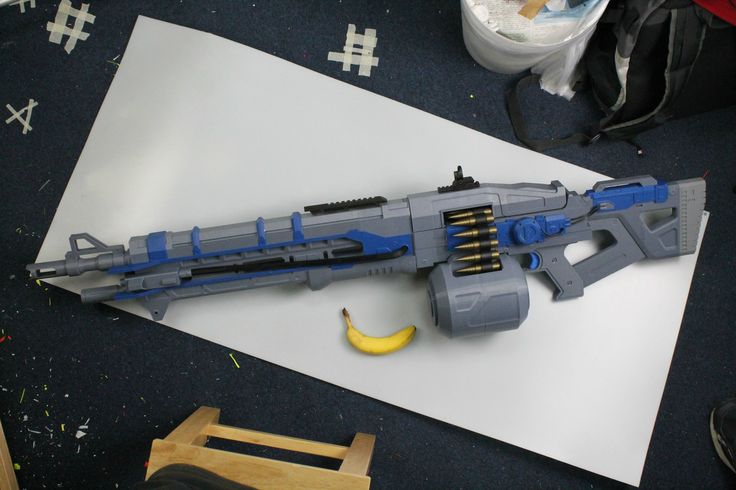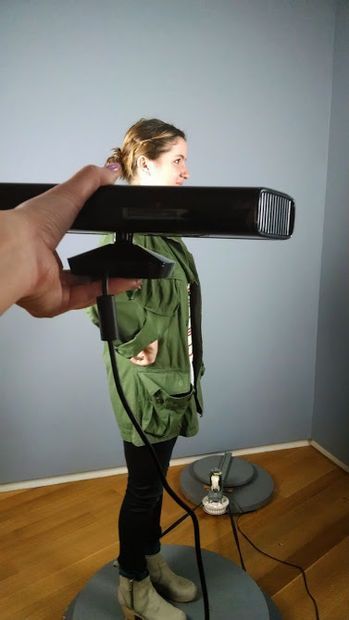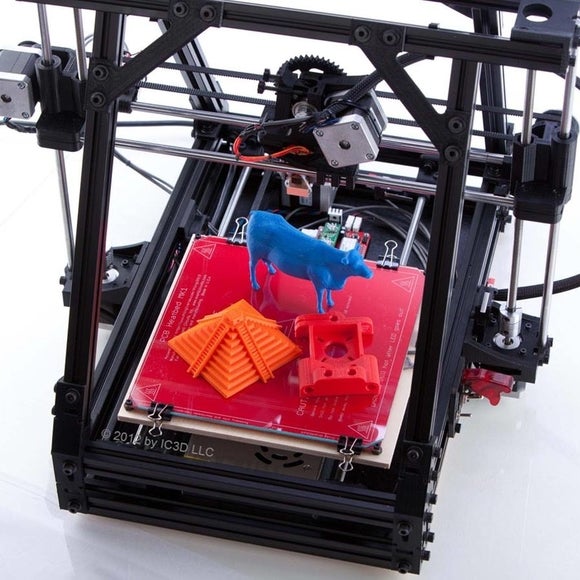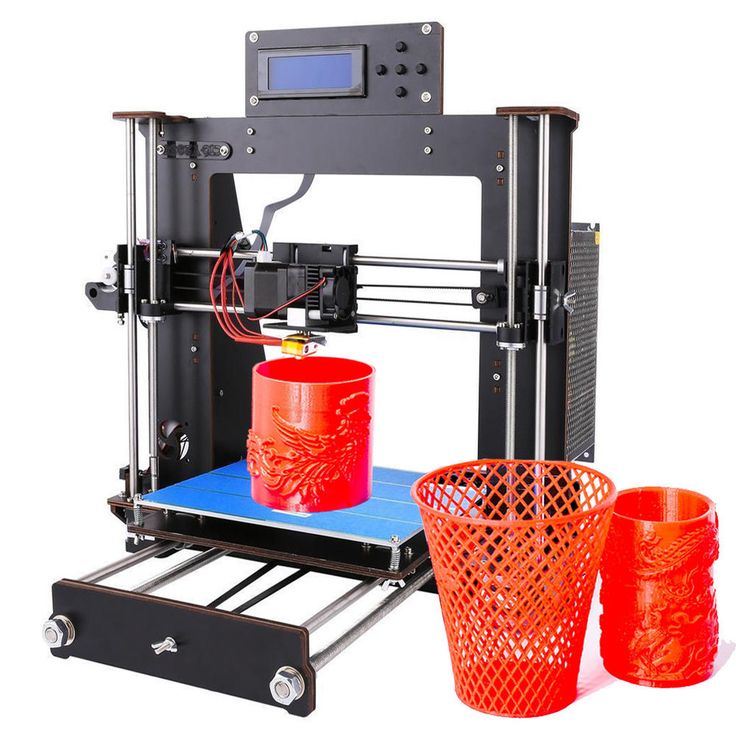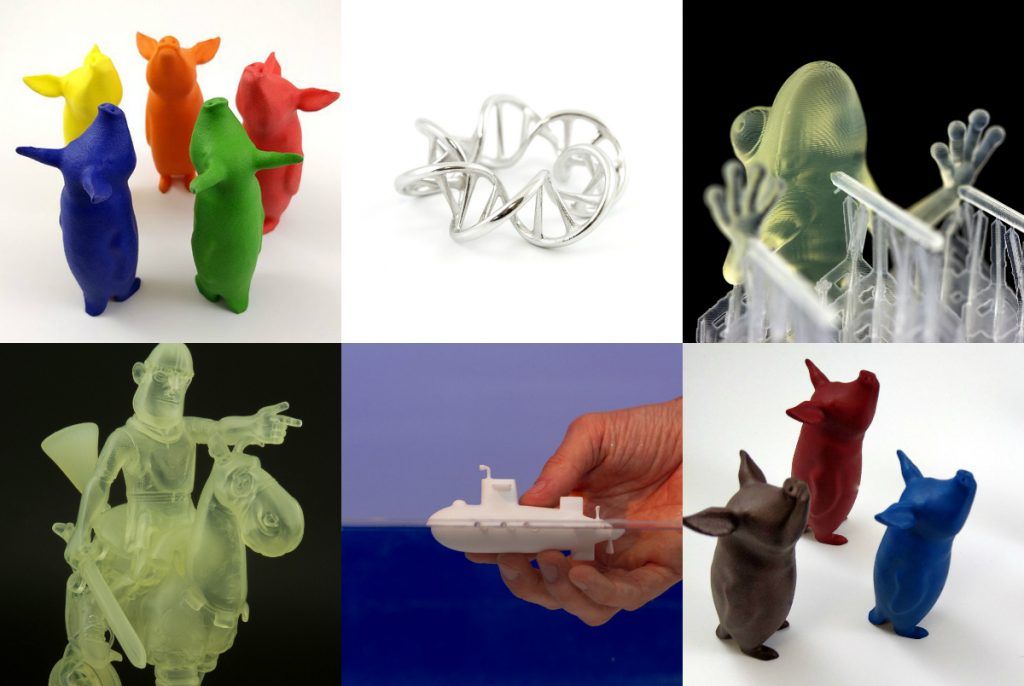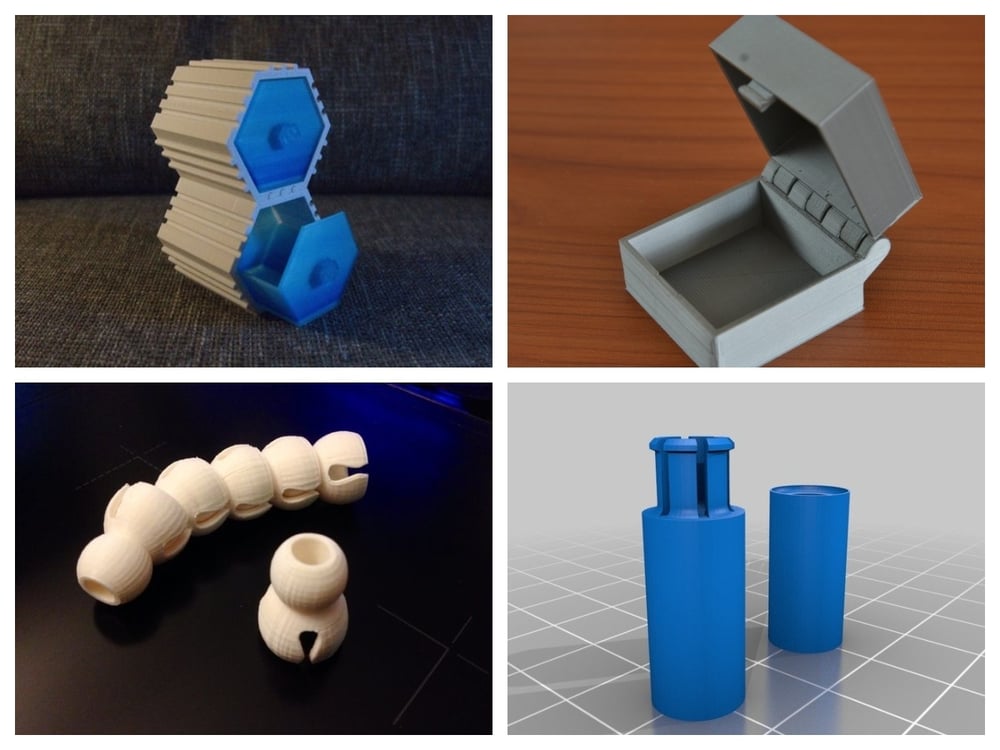3D printing wood filament
Ultimate Materials Guide - 3D Printing with Wood Filament
Overview
Wood-based filaments are typically a composite that combines a PLA base material with wood dust, cork, and other powdered wood derivatives. Typically, the filament consists of around 30% wood particles, but the exact number may vary depending on the brand. The presence of these particles gives the 3D printed parts the aesthetics of real wood. This filament is also less abrasive compared to other composite filaments such as carbon-fiber filled and metal filled, since wood particles are much softer. There are some wood-like filaments on the market that only contain wood coloring, but no actual wood particles, so these typically have a very different look and feel. This guide will focus on wood infused PLA filaments since these are the most common, but you can use these tips as a starting point for other wood-based filaments as well.
- Wood-textured finish is aesthetically appealing
- Does not need any expensive wear resistant nozzles
- Aromatic and pleasant smelling
- Prone to stringing
- Smaller nozzles can end up with partial clogs over time
- May require a larger size nozzle
Hardware Requirements
Before 3D printing with wood filled filaments make sure your 3D printer meets the hardware requirements listed below to ensure the best print quality.
Bed
Temperature: 45-60 °C
Heated Bed Optional
Enclosure Not Required
Build Surface
Painter’s Tape
Glue Stick
Glass Plate
PEI
Extruder
Temperature: 190-220 °C
No special hotend required
Cooling
Part Cooling Fan Required
Best Practices
These tips will help you reduce the chances of common 3D printing issues associated with wood filaments such as clogging, oozing, and stringing.
Use Larger Nozzle Sizes
Due to the added wood particles in this plastic, standard 0.35 or 0.4mm nozzles can be challenging. The particles have a tendency to clump near the nozzle orifice, causing inconsistent extrusion or partial clogs. We recommend using a 0.5mm or larger diameter nozzle, as this significantly reduces the chances of clogging. It may also be a good idea to clear your nozzle regularly to remove any partial clumps that may have formed within the nozzle.
Fine Tune Your Retraction Settings
Optimizing the retractions for wood filaments can be challenging. The wood particles in the plastic can interfere with the nozzle’s ability to maintain the suction pressure after a retraction. This means that the nozzle may ooze more than normal at the start and end of each printing segment. Simplify3D includes a unique feature called Coasting, which can be very useful for these situations. Coasting will automatically reduce the pressure in the nozzle as the extruder approaching the end of a printing segment. This way, when it needs to retract and move to the next location, there is far less pressure to deal with. This can significantly improve the surface finish of your models by removing the blobs at the end of a segment. You can also try using a negative value for the “extra restart distance” setting on the Extruders tab of your process settings. For example, a value of -0.1 or -0.2mm can help account for the extra oozing that takes place due to the wood particles. For more tips on how to combat blobs and optimize your retraction settings, please refer to our Print Quality Guide, which contains an entire section devoted to this issue: How to Reduce Blobs and Zits.
The wood particles in the plastic can interfere with the nozzle’s ability to maintain the suction pressure after a retraction. This means that the nozzle may ooze more than normal at the start and end of each printing segment. Simplify3D includes a unique feature called Coasting, which can be very useful for these situations. Coasting will automatically reduce the pressure in the nozzle as the extruder approaching the end of a printing segment. This way, when it needs to retract and move to the next location, there is far less pressure to deal with. This can significantly improve the surface finish of your models by removing the blobs at the end of a segment. You can also try using a negative value for the “extra restart distance” setting on the Extruders tab of your process settings. For example, a value of -0.1 or -0.2mm can help account for the extra oozing that takes place due to the wood particles. For more tips on how to combat blobs and optimize your retraction settings, please refer to our Print Quality Guide, which contains an entire section devoted to this issue: How to Reduce Blobs and Zits.
Minimize Stringing and Oozing
The wood particles in this material make it very difficult to maintain proper suction in the nozzle when moving between two locations. This frequently leads to oozing or stringing while printing. Thankfully, Simplify3D includes a feature that was designed for this exact purpose. If you go to the Advanced tab of your process settings, you can enable the “avoid crossing outline for travel movements” option. With this option enabled, the software will try to move within the interior of your model as much as possible. So instead of moving in a straight line from point A to B, it will chart an alternate route that keeps the extruder over top of the model to avoid stringing and oozing. This can frequently reduce the exterior movements by over 50% and can greatly improve your print quality.
Pro-Tips
- With certain wood filaments, using different extruder temperatures will produce slightly different colors for the final printed part.

Using this effect, you can setup different temperatures for different layers of your print in Simplify3D to create a realistic grain pattern on the surface of the printed part. - Wood filaments are very good at hiding the layer lines between different layers of your print. For simple shapes, you can likely print with a much larger layer height, since the lines between layers will be less visible.
- Many wood-based filaments can be easily post-processed using standard wood sand paper. This can further smooth and refine the surface finish of your prints.
Get Started with Wood Filled Filaments
Now that you’ve learned the basics for this material, here are some ideas to help you tackle your first project. We’ve included sample applications, a few projects you try, and popular filament brands we see from our customers.
Common Applications
- Household decorations
- Cosplay props
- Toys
Sample Projects
- Tree Stump Pencil Holder
- Frankenstein Switch Plate
- Wand
- Baby Groot
Popular Brands
- ColorFabb WoodFill, BambooFill, CorkFill
- Fillamentum Timberfill
- Hatchbox Woodfill
- FormFutura EasyWood
- Polymaker PolyWood
How to 3D Print With Wood Filament Properly – A Simple Guide – 3D Printerly
3D printing with wood is something that many people want to try out, but it requires a special kind of wood filament mixed with PLA. Once you get the filament, you have to follow certain settings and guidelines to get the best results.
Once you get the filament, you have to follow certain settings and guidelines to get the best results.
This article will set you on the right track to 3D print with wood filament, as well as give you some ideas on what to print, and the best filament to actually buy.
To 3D print with wood filament, use a printing temperature that is within the range set by your specific spool of filament, usually at around 200°C. Try to use a heated bed temperature of around 50°C. A good printing speed for wood is around 60mm/s and you should use a hardened steel nozzle since it is more durable.
These are the basic details, but there is definitely more information you’ll want to know for 3D printing wood filament, so keep reading to get better printing results.
How to 3D Print With Wood Filament
The first step to 3D printing with wood filament is making sure you pick a reliable roll of wood PLA because they are not all made the same. It’s pretty simple to find a good roll, usually going off other reviews from online retailers.
I’ve got a section in this article that will go over the best wood filaments to get, but the one I’d recommend for you to get now is the HATCHBOX Wood PLA Filament 1KG from Amazon.
They have a great track record of high quality filament, and the resulting prints that you can see from pictures on Amazon are absolutely amazing! Below is a picture of Baby Groot printed with wood filament.
Use the Best Temperature for Wood Filament
- Set the nozzle temperature somewhere between 175 – 220°C, just like you do with PLA. The exact temperature can differ depending on the filament brand, and some people have reported even going up to 245°C. This optimal range should be stated on the filament packaging.
- It is a good idea to use a heated bed for wood filament, but it’s not essential. The usual temperature ranges from 50-70°C, some going up to 75°C and getting good adhesion results.
Some people have noticed that when they 3D print with wood filament, they find small black specks on the models. This can be due to the wood filament having prolonged contact with the heated nozzle, especially if the temperature is high and printing speed is low.
This can be due to the wood filament having prolonged contact with the heated nozzle, especially if the temperature is high and printing speed is low.
You want to minimize the amount of time the wood filament is touching the hot nozzle, so you can do this by either increasing your printing speed, so the filament moves faster, or by reducing your printing temperature.
A great thing you can do with wood filament is that you can create different shades in your model by printing at different temperatures.
This is because a higher temperature will bring darker color whereas a lower temperature can bring lighter shades, but it doesn’t work with all wood filaments.
Use the Best 3D Printer Settings for Wood Filament
Once you have your temperatures dialed in, you also want to look for other important settings such as:
- Retraction settings
- Flow rate or extrusion multiplier
- Print speed
- Cooling fan speed
The right retraction settings can definitely help with printing wood filament to reduce the stringing and oozing that can arise. Having a retraction length of 1mm and a retraction speed of 45mm/s worked wonders for one user
Having a retraction length of 1mm and a retraction speed of 45mm/s worked wonders for one user
It improved the look of the top layers, reduced stringing, and eliminated the presence of their nozzle clogging on the retraction. I always advise doing your own testing though, because another user had good results with 7mm retraction distance, and 80mm/s retraction speed.
Some have gotten better printing results by increasing their flow rates to 1.1 or 110% for wood filament.
For your printing speed, you can start with a regular print speed of 50-60mm/s, then adjust this base on your initial testing and results.
You usually don’t want to go too fast with printing wood, more so adjustments to the lower side.
Cooling can differ, where some people say to put it on full blast at 100%, then others use a range of 30-50%.
Since it’s PLA, I’d start off with 100% and make adjustments if you see the filament isn’t settings well while watching the print.
Use the Best Nozzle Diameter for Wood Filament
One user noticed that he experienced nozzle clogs which led to the grinding of his extruder gears. Getting jams or clogs in your nozzle when 3D printing with wood filament isn’t uncommon, but a great fix is 3D printing it with a larger nozzle.
Getting jams or clogs in your nozzle when 3D printing with wood filament isn’t uncommon, but a great fix is 3D printing it with a larger nozzle.
People tend to recommend a nozzle size of at least 0.6mm for wood filament. It’s still a good balance of a good quality 3D print (as long as it’s not a miniature) and printing speed.
You can still successfully 3D print wood PLA with a 0.4mm nozzle as many have, but you may have to increase your flow rate to compensate for the more abrasive material.
One user who usually 3D prints with a 0.95 extrusion multiplier or flow rate increased it to 1.0 to 3D print the wood filament. They used a 0.4mm nozzle at a 195°C printing temperature and 50°C heated bed, all with no clogs.
Use the Best Nozzle Material for Wood Filament – Hardened Steel
Similar to filament like glow-in-the-dark filament or carbon fiber, wood filament has the characteristics of being somewhat abrasive on the nozzle. Brass may conduct heat a lot better, but it is a softer metal meaning it is more susceptible to wearing away.
This is why many people will use a hardened steel nozzle to 3D print their wood models. You’ll most likely have to increase your printing temperature around 5-10°C to make up for the reduction in thermal conductivity.
Dry Your Wood Filament & Store It Properly
Wood PLA tends to have a higher instance of absorbing moisture from the air pretty quickly, so it is advised to dry it before use and store it away from moisture.
You’ll know your filament is efffected by moisture if you get a popping or bubbling when the filament extrudes from the nozzle. That is when a lot of moisture have been absorbed, but it doesn’t mean filament doesn’t have moisture if it doesn’t pop or bubble up.
There are many storage options, but they usually tend to have an airtight aspect, as well as a desiccant to absorb the moisture from within the storage, similar to how your filaments come packaged.
You can also get a professional solution, the SUNLU Filament Dryer on Amazon which is definitely growing in popularity due to its effectiveness.
Apply Adhesives On Your Print Bed
Wood 3D prints are known to slip away from the build plate due to poor adhesion. Since it has those wooden properties, it doesn’t have the same level of adhesion as normal PLA, so it’s recommended to use some type of adhesive on your print bed.
The most common print adhesives that people use tend to be glue sticks, tape, hairspray, or a different type of surface like PEI sheets.
PEI sheets are very popular because they work well. You can get yourself the Gizmo Dorks PEI Sheet Self-Adhesive Build Surface from Amazon for a respectable price.
Post-Process Your Wood 3D Print
To get the best results out of your wood 3D prints, you’ll want to put it through some post-processing like sanding and polishing, just like real wood.
You can print a lower layer heights/resolutions if you are going to sand your wood 3D prints because the visible lines can be sanded right out, saving you some valuable 3D printing time.
A popular set of sandpaper is the Miady 120 to 3,000 Assorted Grit Sandpaper for Wood from Amazon. You can sand your 3D prints wet or dry as you wish, allowing yourself to get some amazingly smooth and high quality wood-like models.
Some people will sand down their wood 3D prints, then use a lacquer or polish to give it that real wooden look and even smell. Luckily, 3D prints from wood filament sands really easily.
For a good clear coat for your wood, I’d recommend going with the Rust-Oleum Lacquer Spray (Gloss, Clear) from Amazon.
As usual, with the sanding process you want to start with a low, rough grit, then gradually work your way up to finer grit to really smooth out your wood 3D prints.
You can trial some oil wood stains to get your desired effect on your objects. Users say it can take quite a few coats to get the right color, though there are products which aren’t oil-based that can work better.
For an amazing odorless wood stain for your 3D printed object, you can go with the SamaN Interior Water-Based Stain for Fine Wood from Amazon. There are plenty of different wood finishes to choose from, and it just needs one good coat.
There are plenty of different wood finishes to choose from, and it just needs one good coat.
Many people will find it hard to tell the difference between your post-processed wood 3D print, and a real wooden piece when done correctly.
The print may not be as smooth as you print with PLA. Therefore, sanding and painting are necessary to get an efficient and perfect wood-like finish.
Once you’ve learned how to properly prepare your 3D printer for wood filament, you can create amazing wood prints like the Baby Groot pictured below.
1 day and 6 hours. 0.1 layer height with wood filament from prusa3d
So to recap, you’ll want a:
- Printing temperature of 175 – 220°C depending on the specific filament recommendations
- Heated bed temperature of 50 – 70°C
- Printing speed of 40 – 60mm/s
- Flow Rate of 100 – 110%
- Retraction distance of 1-7mm
- Retraction speed of around 45-60mm/s
- Product for adhesion like glue stick, hairspray or tape
Best Things to 3D Print with Wood Filament
The best things to print with wood filament and some of the best facts about printing with wood filament are mentioned below:
- Baby Groot
- Brackets or Shelves
- Elder Wand
- Chess Set
- Frankenstein Light Switch Plate
- Small Toys
- Tree Stump Pencil Holder
- Decorative Accessories
Check out this large list of Thingiverse Objects Tagged with “Wood” for plenty of ideas for you to 3D print.
I actually wrote an article on the 30 Best Wood 3D Prints That You Can Make Now, so feel free to check that out for a curated list.
Being able to 3D print using this wood PLA filament really opens up the possibilities of creating unique, complex, or just simple objects and giving it a real wooden-like look to it.
Wood filament is efficient in hiding the layer lines that usually can be seen in 3D printed models.
Craved models that require a high level of skills and time, can be easily printed using 3D wood filament.
For simple and easier models, you have the option to print with a larger layer height as there are usually less visible layer lines.
Models printed with wood filament can be sanded, sawed, stained and painted according to your desires.
Best Wood Filament for 3D Printing
HATCHBOX PLA Wood Filament
This filament composed of Poly Lactic Acid and plant-based material is considered one of the best wood filaments for thermoplastic 3D printing. It is a favorite as it is non-toxic, low odor, and doesn’t require any heated bed while printing.
It is a favorite as it is non-toxic, low odor, and doesn’t require any heated bed while printing.
HATCHBOX PLA Wood Filament (Amazon) is one of the most popular wood filament that is 3D printed out there. It has over 1,000 reviews, a majority of watch are very positive.
At time of writing, it has an Amazon rating of 4.6/5.0 which is very respectable.
Pros
- +/- 0.3mm dimensional accuracy
- Easy to use
- Versatile in terms of usage
- Low or no odor
- Minimum warping
- Does not require a heated print bed
- Eco-friendly
- Can be printed nicely with a 0.4mm nozzle.
- Vibrant and bold colors
- Smooth finish
Cons
- May not stick to the bed efficiently – use adhesives
- Due to the addition of soft wood particles, it is more brittle as compared to PLA.
- HATCHBOX customer support is reportedly not the best, but it may be a few isolated cases.
One of the users shared his experience stating that if you work properly on the post-processing, you can get a model with a smooth and glossy finish.
He printed a chess set and after proper sanding, staining, and painting, it is extremely difficult for a third person to identify the difference between carved wood chess and a 3D printed chess with HATCHBOX PLA Wood Filament.
Check out the HATCHBOX PLA Wood Filament on Amazon for additional information.
SUNLU Wood PLA Filament
The SUNLU Wood Filament from Amazon is made with 20% wood fibers from recycled wood, along with the main material being PLA.
With this filament, you can adjust your printing temperature to alter the final color of the printed object which is pretty cool. It has guarantees to be clog-free and bubble-free, ensuring a smooth extrusion from your 3D printer.
Each spool of SUNLU Wood Filament is dried for 24 hours before being carefully packaged into the re-sealable aluminum foil bag, a perfect storage option to keep your filament in optimal condition when stored.
You’re getting a dimensional accuracy and tolerance of just +/- 0. 02mm, and a 90-day money-back guarantee if you aren’t happy with their quality.
02mm, and a 90-day money-back guarantee if you aren’t happy with their quality.
Pros
- 20% wood fiber – giving a woody surface and incense
- Great filament tolerance
- Ultra smooth extrusion experience
- +/- 0.2mm dimensional accuracy
- No bubbles
- No clogging
- Comes vacuum sealed in a re-sealable bag
- Certified
- Minimal warping
- Great adhesion
Cons
- Some people have had trouble printing with a 0.4mm nozzle, but many get good results
- A few users have mentioned color differences with an order compared to previous orders
You can’t go wrong with some SUNLU Wood Filament from Amazon for your wood 3D printing needs, so get a spool today!
Best 3D Printer Filaments (Review 2021)
Once you've chosen your 3D printer, you need to choose the type of filament intended for your project. Filament is a raw material used in 3D printers that will be heated to a high temperature to turn it into a semi-solid state. At this point, the printer can easily create the appropriate design layers and print the entire 3D CAD model onto a plate.
At this point, the printer can easily create the appropriate design layers and print the entire 3D CAD model onto a plate.
However, as you research the various 3D printer filaments, you will hear of numerous materials that can only make it harder to choose the right one for you. This is especially true for people who are just starting to explore the world of the 3D printing process.
While most of us are not new to PLA and ABS, there are other fiber materials you should be aware of such as HIPS, PET, PETG, TPE, TPU, TPC and a few others. And to get a better idea of them, here are some of the more typical types of 3D printer filaments available on the market.
3D Printer Filament Types
PLA Filament
Polylactic acid (PLA) reigns supreme in the industrial 3D printing world. 3D printing with PLA is so easy. It has a lower plate temperature, so it doesn't need a heating bed and therefore has fewer warping issues.
It is widely used in prototyping, such as printing low-wear toys, prototype parts and containers. Please note that it cannot be used for anything that has a temperature rating of 60°C or higher as it warps at 60°C. For all other purposes, PLA is suitable for a general 3D printer.
ABS Filament
ABS (also known as Acrylonitrile Butadiene Styrene) is the second most popular 3D printing filament. In general, ABS withstands high loads and high temperatures. Thus, it is suitable for most applications. It is great for items that are frequently handled, dropped or heated. For example, mobile phone cases, high-wear items, automotive trim parts, and electronic houses.
Nylon filament
Nylon is the preferred family of synthetic polymers for many industries, professional 3D printing being one of them. As for other forms of filament, they have better performance, efficiency, versatility and durability. Given the strength and versatility of nylon, this type of 3D printer filament can be used to make loops, buckles or gears, as well as working prototypes.
Given the strength and versatility of nylon, this type of 3D printer filament can be used to make loops, buckles or gears, as well as working prototypes.
PET (G) thread
The most widely used plastic in the world is polyethylene terephthalate (PET). It is best known as water bottle thread, but it is also used in clothing fibers as well as food containers. Although PET is commonly used in 3D printing, its modified version PETG is becoming more common.
The G in PET stands for glycol, resulting in a more transparent filament that is less prone to cracking and easier to use. PETG is versatile but surpasses many forms of 3D printer filament in its strength and inability to reach high temperatures or withstand strong impacts. The fulfillment of the following conditions makes it an excellent choice for 3D printing filament for practical parts such as mechanical parts, printer parts, and protective materials.
TPE, TPU, TPC filament
Thermoplastic polyurethane (TPE) is a flexible and durable plastic similar to rubber.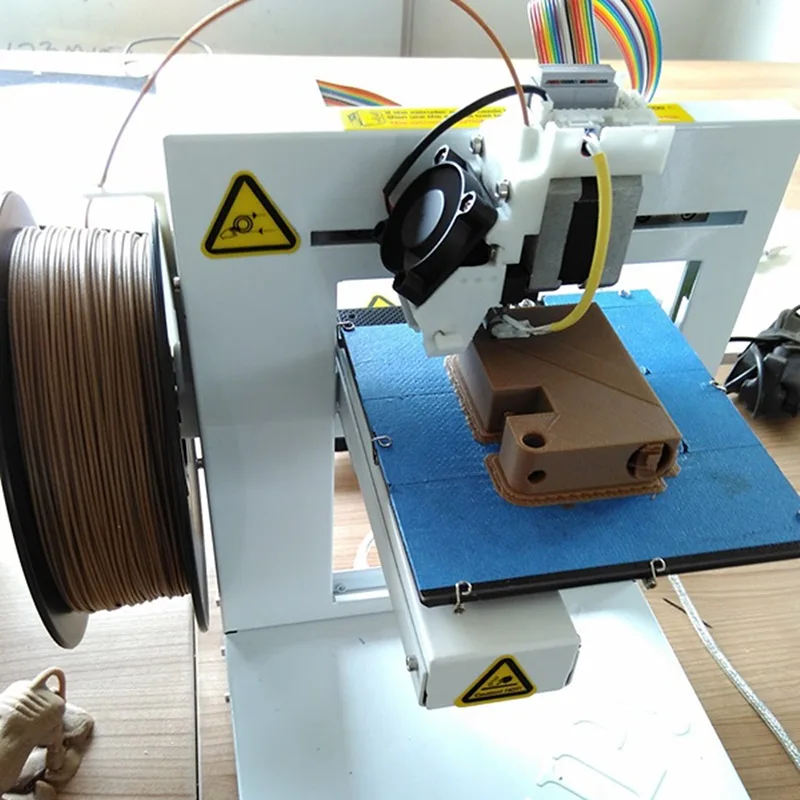 In addition, TPE is mainly used for the production of auto parts and household appliances.
In addition, TPE is mainly used for the production of auto parts and household appliances.
TPU (Thermoplastic Polyester E) is a special form of TPE that is very common among high end 3D printers. Compared to conventional TPE, TPU is significantly more flexible, hence allowing more control during printing.
What's more, TPC (Thermoplastic Copolyester) is also another form of TPE that is not as widely used as TPU. The key advantage of TPC over TPE is its greater resistance to chemical and UV attack, as well as heat (up to 150°C).
If you need to create items that require a lot of wear, use TPE or TPU because these filaments use 3D printed filaments that are vulnerable to deformation. Products such as toys, mobile phone cases, or wearable items such as wristbands can be some examples of its application. On the other hand, TPC performs well for comparable applications, but outperforms it in harsher environments, including outdoors.
Wood filament
Technically not wood because it contains wood fiber in enhanced PLA. Generally speaking, wood products are valued for their natural beauty rather than their practical utility. When printing items for tables, tables or shelves, it is recommended to use wood 3D printing media. Any of the application examples include chalices, figurines, and trophies. What's more, it's a truly innovative application for 3D printers, which are often used to model real buildings, structures, or trees.
Generally speaking, wood products are valued for their natural beauty rather than their practical utility. When printing items for tables, tables or shelves, it is recommended to use wood 3D printing media. Any of the application examples include chalices, figurines, and trophies. What's more, it's a truly innovative application for 3D printers, which are often used to model real buildings, structures, or trees.
Metal thread
Like wood thread, it is not 100% metal. Specifically, it is composed of metal powder, and one of the following materials is PLA or ABS. However, the effects also have a metal-like aesthetic appeal. Metal Infused can be printed for both decorative and practical purposes. Figures, prototypes, toys, including tokens, can be 3D printed from metal and give them a great look. You can also use metallic 3D printer filament to make parts such as tools or finishing components in light applications.
Biodegradable (biophila) filament
This biodegradable 3D printer filament aims to reduce the impact of all plastic waste into the atmosphere. Although biodegradable 3D filament was originally environmentally friendly, it can still produce quality printed products. Choose this biophile if you don't have special requirements for strength, versatility or endurance. For projects that require prototyping, you can also benefit from these flawless fiber prints that can be biodegraded responsibly.
Although biodegradable 3D filament was originally environmentally friendly, it can still produce quality printed products. Choose this biophile if you don't have special requirements for strength, versatility or endurance. For projects that require prototyping, you can also benefit from these flawless fiber prints that can be biodegraded responsibly.
Conductive thread
This is a kind of three-dimensional material with conductive carbon particles in it. It is ideal for Arduino-based open source businesses. You'll want to look into this filament if you want to make circuits, LEDs, sensors, and other low voltage projects.
Magnetic filament
PLA magnetic iron filament is as magnetic as the name suggests. This one-of-a-kind filament is made from PLA material impregnated with powdered iron. It is ideal for making fridge magnets and other custom-made decorative items. Also, it can be used to create multiple DIY structures, sensors, educational resources, etc. 0003
0003
Top Five 3D Printer Filaments
Access to a 3D printer creates a whole new world of creative printing. There are several purposes and hobbies that 3D printing serves, but they all rely on the same raw material - 3D printer filament.
While unique materials are recommended for durable and impressive models, you need to select the right material for your 3D image. need printer. You also need to consider the quality and attributes of the thread. That being said, finding the right 3D filament is no picnic.
As such, we sought the advice of tech experts and 3D printer enthusiasts to find the most popular 3D printing filaments on the market. And to give you a clearer idea of their main features and specifications, we have done a detailed analysis to better understand which filament you should pair with your 3D printer. Also, don't forget to click on the buttons below to get the best deals on Amazon!
Some of the most amazing 3D printing materials currently available
3D printing with classic materials such as plastic, metal or ceramics is widespread. In the meantime, there are many alternative materials that are not only unusual, but can make a 3D printed part even more special. In our selection, we introduce you to these unusual materials. From chocolate and salt to recycled plastic waste or ashes, now you can create the most extraordinary items. In some cases, these materials are even proving to be a great alternative to plastic, reducing overconsumption and the associated environmental impact. Today we're going to take a look at these amazing 3D printing materials.
In the meantime, there are many alternative materials that are not only unusual, but can make a 3D printed part even more special. In our selection, we introduce you to these unusual materials. From chocolate and salt to recycled plastic waste or ashes, now you can create the most extraordinary items. In some cases, these materials are even proving to be a great alternative to plastic, reducing overconsumption and the associated environmental impact. Today we're going to take a look at these amazing 3D printing materials.
3D printing material from the sea
Today, filaments are still the most commonly used 3D printing materials, mainly because FDM machines are readily available. But did you know that some threads are made from shellfish and crustaceans? The French company Francofil offers materials from PLA and shells of mussels, scallops and oysters. Their shells come from recycled food service waste and are shredded to become threads. The materials are made in France and can be printed like regular PLA.
Photo: Francofil
Local Salt
Emerging Objects is an American company that uses new technologies with innovative materials to create impressive projects. Among the most prominent initiatives is Saltygloo, a salt 3D printed structure. The salt used was collected from San Francisco Bay. Due to climatic conditions, about 500,000 tons of sea salt are produced here annually. Salt has been used to additively manufacture lightweight structures on a large scale. In addition to Saltygloo, the company is known for other salt projects such as the GEOtube tower and building houses.
Photo: Matthew Millman
Chocolate is the sweetest 3D printable material
This 3D printable material may not be as exceptional as some of the others on the list, but it is certainly one of the most used. The chocolate 3D printing process is similar to FDM technology, but it has different cooling properties than plastic, so the process takes longer. The popularity of this technology has grown over the years, prompting many companies to develop various designs and even chocolate 3D printers. Among the best known is the collaboration between 3D Systems and Hershey's, one of the world's largest chocolate makers. We also featured some 3D printers that can make delicious sweets like mycusini or Print2Taste. If you want to know more about this technology, don't miss the video below.
The popularity of this technology has grown over the years, prompting many companies to develop various designs and even chocolate 3D printers. Among the best known is the collaboration between 3D Systems and Hershey's, one of the world's largest chocolate makers. We also featured some 3D printers that can make delicious sweets like mycusini or Print2Taste. If you want to know more about this technology, don't miss the video below.
3D printed material from the ashes to remember your loved ones
The Spanish company Narbón is introducing new technologies and innovations in the funeral industry. 3DMemories uses 3D printing to create original, unique and exclusive ceramic jewelry from the ashes, hair, DNA or skeletal remains of a loved one. To do this, the pattern must be processed and then combined with porcelain before the decorations can be 3D printed. Then the enamel is applied and the product is fixed. The service offers a wide range of products for men and women. Undoubtedly, 3DMemories with its range of jewelry is an exceptional way to remember a loved one.
Undoubtedly, 3DMemories with its range of jewelry is an exceptional way to remember a loved one.
Photo: Narbón
Wood-Based Threads
Wood or vegetable threads have also been available on the market for some time. For example, the Dutch company ColorFabb offers several alternative threads in this category. What started in 2014 with BambooFill has expanded in subsequent years with CorkFill and WoodFill. Wood fibers, usually blended with a PLA/PHA base, give parts a natural, high-quality finish. Whether used to make figurines, pieces of furniture, or wall decorations, the threads can be used anywhere the look of wood is desired. Since ColorFabb discontinued BambooFill, a similar product can be purchased in Wood Bamboo form from AzureFilm. According to the company, 40% of recycled wood is mixed with 60% of polymers for this purpose. However, to avoid problems when printing with this filament, it is recommended to reduce the print speed.
Left: ColorFabb, Right: Azure Film
Other Uses for Linen
Another alternative to traditional filaments is a composite of PLA and linen from French manufacturer Nanovia.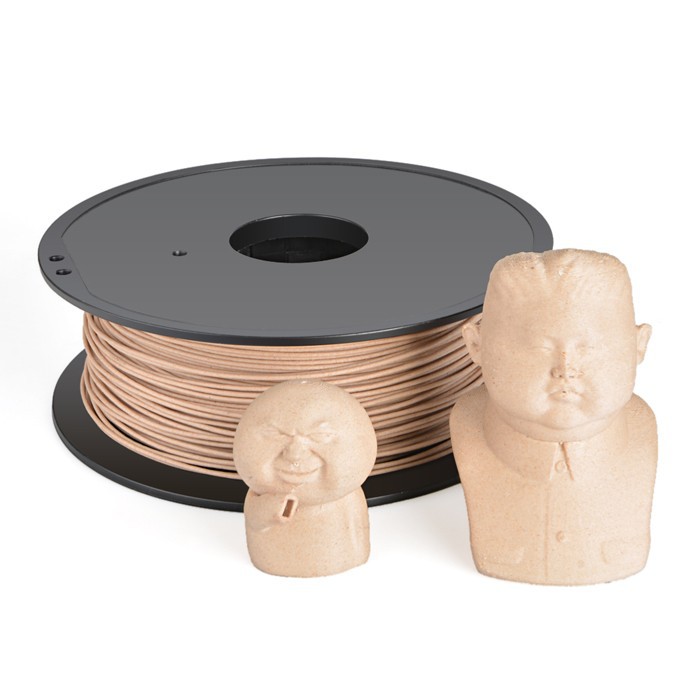 The company says the composite is not only a sustainable alternative to traditional filaments, but also offers the ability to achieve different shades of brown by applying different print settings. This can be achieved simply by changing the print temperature during production. As for the finish, the manufacturer recommends sealing the printed parts with UV protection to keep them intact for as long as possible.
The company says the composite is not only a sustainable alternative to traditional filaments, but also offers the ability to achieve different shades of brown by applying different print settings. This can be achieved simply by changing the print temperature during production. As for the finish, the manufacturer recommends sealing the printed parts with UV protection to keep them intact for as long as possible.
Photo: Nanovia
Sugar 3D Printing
Sugar Lab was acquired by 3D Systems almost ten years ago and, as the name suggests, has focused on sugar 3D printing. Using the 3D Systems ChefJet Pro printer, the company creates intricately shaped candies and decorations. The Los Angeles-based company claims to be able to produce candy in all flavors and colors. Whether it's birthdays, weddings or Christmas parties, The Sugar Lab offers all sorts of 3D printed candies. As for quantity, the 3D printer seems to be capable of producing up to 100 candies a day. While The Sugar Lab is the most famous company using sugar as a printing material, other companies like The Modernist Cuisine are also trying their hand at 3D printing with sugar.
While The Sugar Lab is the most famous company using sugar as a printing material, other companies like The Modernist Cuisine are also trying their hand at 3D printing with sugar.
3D printing with glass
Glass has been popular in many industries for many years and is also used in additive manufacturing. Several researchers, such as those at MIT or Lawrence Livermore National Laboratory (LLNL), have developed 3D printing solutions to print on glass. For example, an MIT team has developed the G3DP2 machine, which can process 5 kg of glass per hour. With this machine, the researchers were able to create three-meter-high glass columns at Milan Design Week. Recently, the Glassomer startup has also unveiled its glass 3D printing technology. The company is developing a material made from fine glass powder and a plastic binder that can be processed on SLA printers.
Photo: Glassomer
Recycled plastic filament
Sustainability is gaining more and more attention in additive manufacturing, and many companies are looking for alternatives.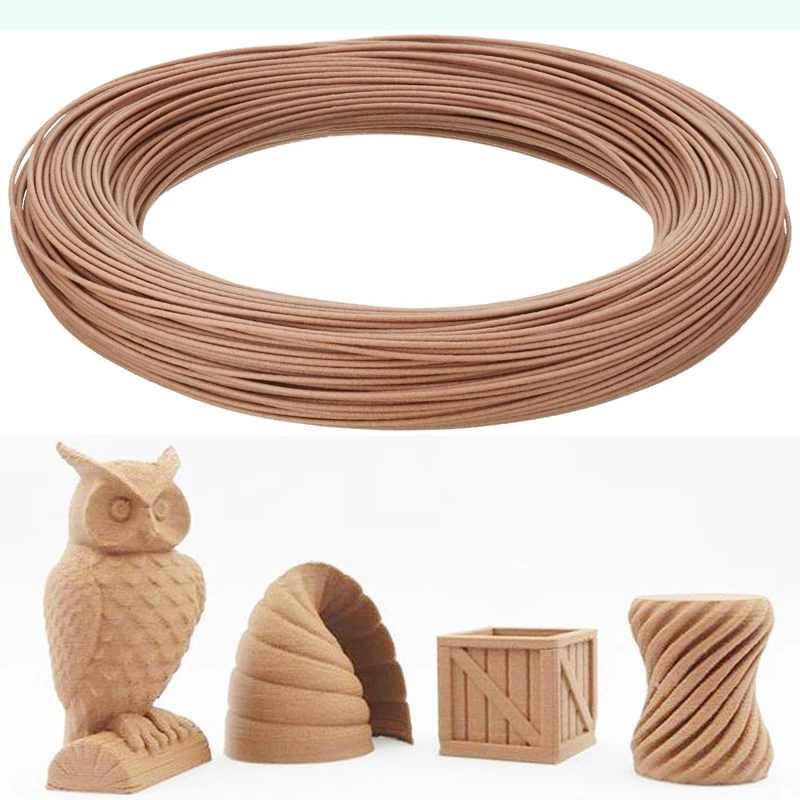 In recent years, several exciting products have been developed to make 3D printing more sustainable by making filaments from recycled plastic. One such project is Print The City by The New Raw, in which plastic from the waste of the people of Amsterdam and Thessaloniki is turned into 3D printed filament and used to print benches and other outdoor furniture. Another initiative is the Million Wave Project, which aims to produce recycled PET filaments for 3D printed prosthetic limbs for those in need. Another example is the ZUV tricycle, which was printed in Austria by EOOS using filaments made from 70kg of plastic waste from supermarkets in Vienna.
In recent years, several exciting products have been developed to make 3D printing more sustainable by making filaments from recycled plastic. One such project is Print The City by The New Raw, in which plastic from the waste of the people of Amsterdam and Thessaloniki is turned into 3D printed filament and used to print benches and other outdoor furniture. Another initiative is the Million Wave Project, which aims to produce recycled PET filaments for 3D printed prosthetic limbs for those in need. Another example is the ZUV tricycle, which was printed in Austria by EOOS using filaments made from 70kg of plastic waste from supermarkets in Vienna.
Photo: New Raw
Ivory Inspired 3D Printing Material
Among the many materials used for 3D printing, there are those that have been specifically designed to meet specific requirements and solve old problems in an innovative way. One such material is Digory, which was developed by the University of Vienna in collaboration with Cubicure GmbH to meet the need for the restoration of ancient ivory monuments and objects.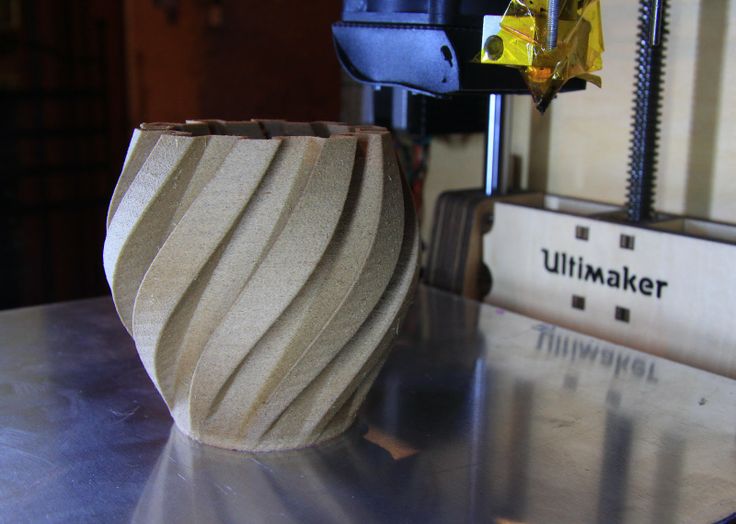 It is a synthetic resin containing calcium phosphate particles and silica powder. Researchers have developed this new material with ivory-like characteristics and properties to restore objects using 3D printing or SLA technology. The similarity between these two materials is striking - there is almost no difference!
It is a synthetic resin containing calcium phosphate particles and silica powder. Researchers have developed this new material with ivory-like characteristics and properties to restore objects using 3D printing or SLA technology. The similarity between these two materials is striking - there is almost no difference!
The Digory material on the right is very similar to the real ivory on the left (photo courtesy of Vienna University of Technology).
Clay as a more sustainable material for 3D printing
One of the unusual 3D printing materials that has certainly attracted attention in recent years is clay. Technically, this is a subset of ceramic 3D printing that, although difficult to print, is known for its incredible properties, in particular the use of clay was especially popularized by the work of the Italian company WASP. For example, we recently saw WASP and Honda use 3D clay printing to create greener cars. There are many other uses, although many of them focus on sustainability due to the clay's properties.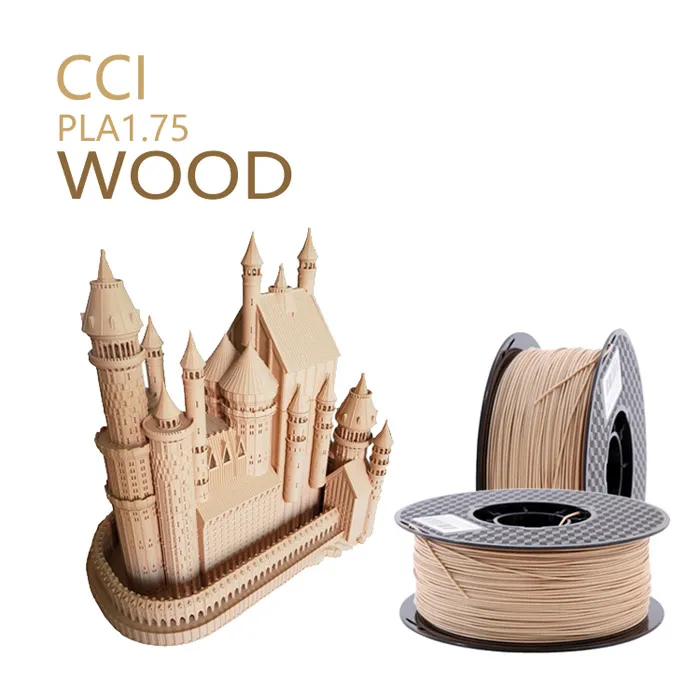 This can be seen in projects such as archiREEF terracotta tiles for coral restoration in Hong Kong, or 3D printed clay containers designed to reduce food waste.
This can be seen in projects such as archiREEF terracotta tiles for coral restoration in Hong Kong, or 3D printed clay containers designed to reduce food waste.
Photo: Jonathan Keep
Diamond - 3D Printing of the Hardest Material on Earth
It may surprise many that one of the hardest materials on Earth, diamond, can actually be printed. Back in 2019, Sandvik Additive Manufacturing announced the first ever 3D printed diamond composite. It is not shiny, but will allow manufacturers to 3D print super-hard material, which will help revolutionize, especially in the tool industry. Diamond is often used in industries such as mining and drilling, machining, and medical implants, especially for its wear-resistant properties, but it is difficult to process. Sandvik claims that this breakthrough in composites will now allow very complex shapes to be 3D printed, and the company has high hopes for its use in the near future.
Human cell printing
When it comes to 3D printing in the medical sector, people often think of bioprinting.


